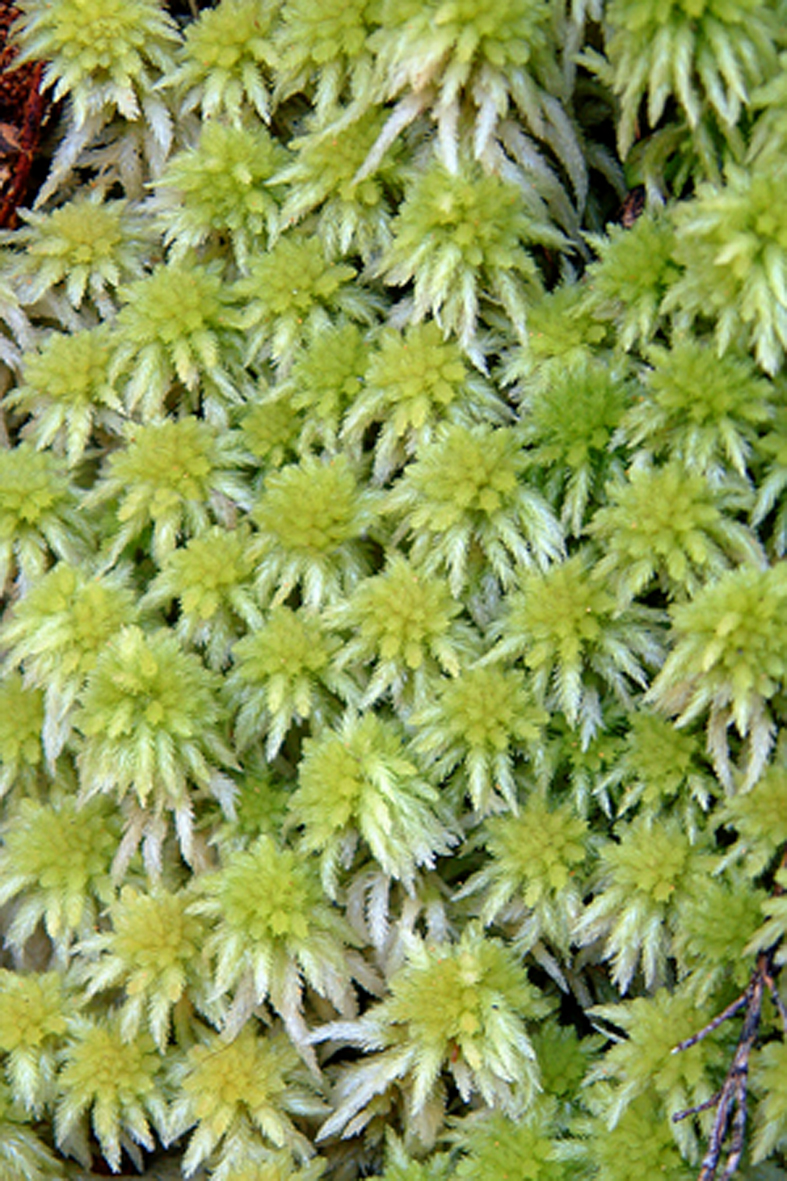
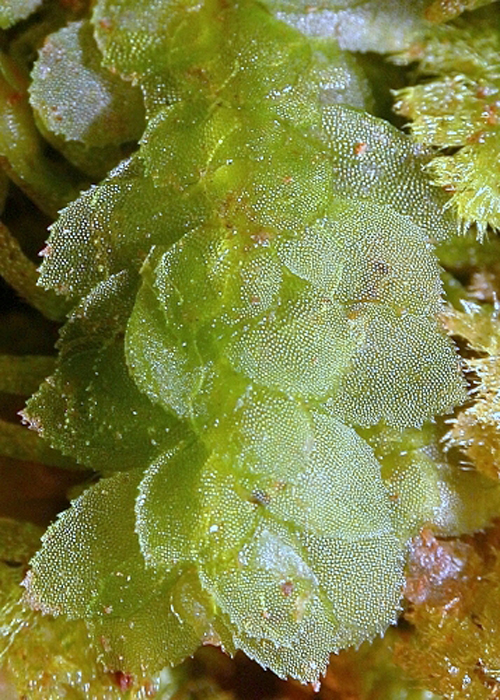
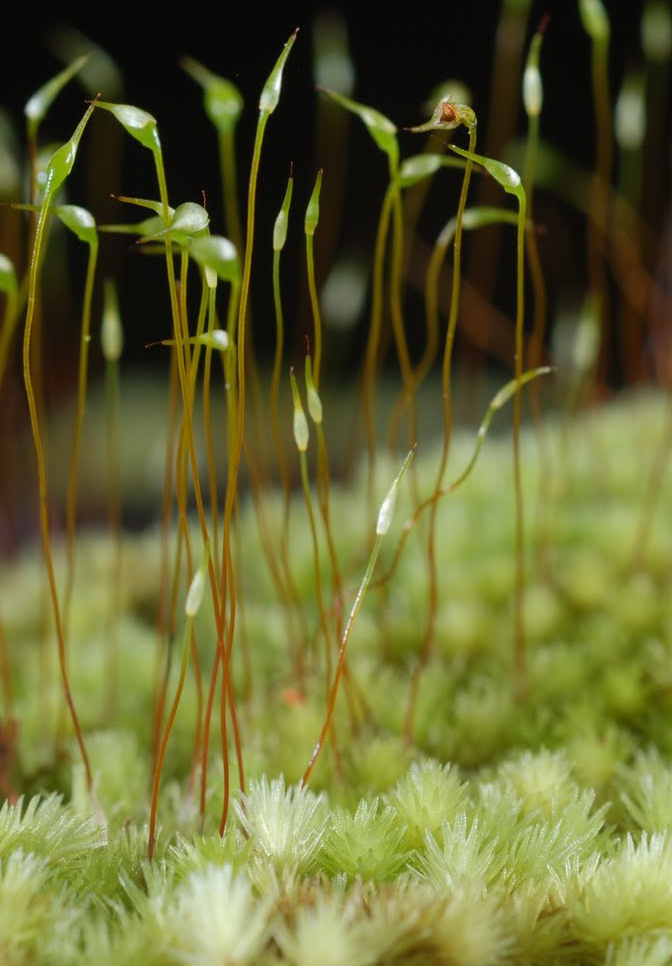
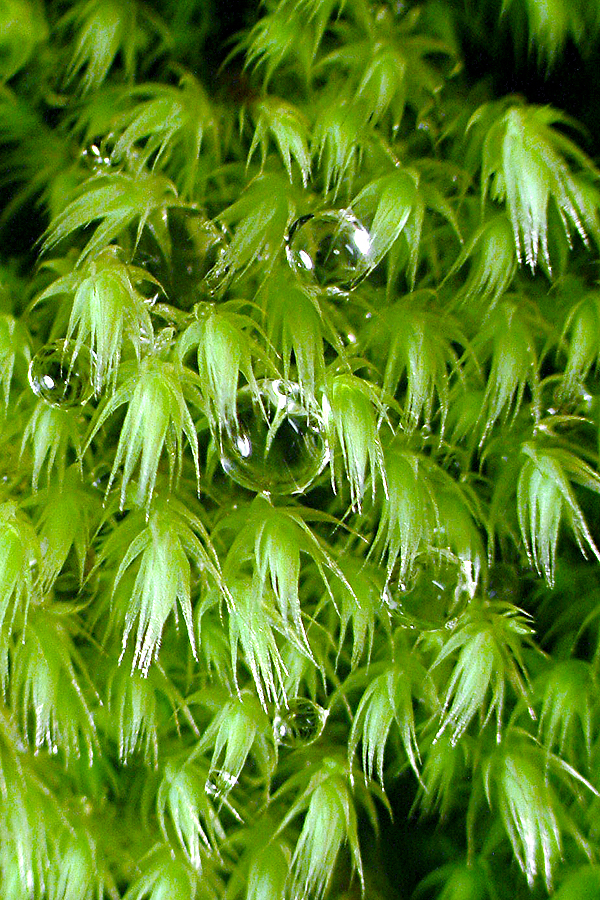
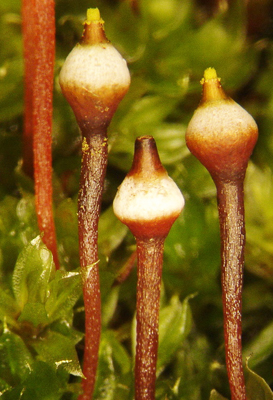
c/- National Herbarium of New South Wales, Mrs Macquaries Road, Sydney, New South Wales 2000, Australia and Department of Biological Sciences, Macquarie University, North Ryde, New South Wales 2109, Australia
First published as: H.P.Ramsay (2006), History of research on Australian mosses, Fl. Australia 51: 1–19. Australian Biological Resources Study, Canberra & CSIRO Publishing, Melbourne.
The botanical specimens collected by the European explorers and naturalists who visited Australia in the late eighteenth and early nineteenth centuries were usually deposited in museums or herbaria in their home countries to be studied by local specialists. Consequently, the most important contributions to the initial development of Australian bryology can be seen in the publications of G.E.L.Hampe (1795–1880), C.Müller (= J.K.A.Müller; 1818–1899), W.Mitten (1819–1906), A.Geheeb (1842–1899), V.F.Brotherus (1849–1929), H.N.Dixon (1861–1944) and others (see Scott & Stone, 1976; Streimann & Curnow, 1989; Tan, 1992; Ramsay & Seur, 1994). Prior to the 1950s, the type specimens of most Australian mosses were held in herbaria in London (BM; Dixon), Helsinki (H; Brotherus), New York (NY; Mitten) and Berlin (B; Müller). Unfortunately, most of Müller’s specimens, including types, were lost when Naturhistorisches Museum Berlin-Dahlem was destroyed in a bombing raid on 1 March 1943. The loss of Müller’s types and the inadequacy of many of his descriptions created nomenclatural problems for succeeding taxonomists. However, a few of his Australian holotypes and some isotypes were retained in the National Herbarium of Victoria and the National Herbarium of New South Wales (Ramsay et al., 1990; Ramsay & Seur, 1994).
It was not until the early years of the twentieth century that local botanists began to document and formally describe Australian mosses. These contributors to Australian bryology ranged from the professional botanist to the dedicated amateur or naturalist whose occupations included teacher, doctor, clergyman, pharmacist, dental surgeon, architect and farmer. Bryological studies in Australia, particularly those on mosses, can be divided into two main periods of activity: early (1790s to 1950) and recent (1950 to the present).
The earliest collections of Australian mosses were made by J.-J.H. de Labillardière in south-western Australia and Tasmania during the D’Entrecasteaux expedition of 1791–1794 (Labillardière, 1807). Subsequently, the renowned botanist Robert Brown accompanied Matthew Flinders on the Investigator in 1801 and, during the next four years, he collected specimens from around the coast of Australia (Brown, 1811, 1814). Brown described a number of Australian moss species, including Dawsonia polytrichoides R.Br. and Leptostomum inclinans R.Br.
The immense size of Australia and, prior to Federation in 1901, its administrative division into six separate Colonies resulted in a rather fragmented and parochial view of bryology in the 1800s. However, in spite of the difficulties of travel, collectors ventured great distances to obtain specimens. The importance of these local botanists and naturalists cannot be overstated. Field Naturalist Clubs (e.g. in Victoria and Queensland) played an critical role in encouraging amateurs to pursue their botanical interests as well as publishing many new records in their journals. The period from the mid-1800s to the early 1900s was highly productive, and much of the early knowledge of Australian mosses was derived from the efforts of numerous contributors (see Maiden, 1908a, b, 1909, 1912, 1921).
New South Wales
At the turn of the twentieth century, William Forsyth (1864–1910), the Reverend William W. Watts (1856–1920) and Thomas Whitelegge (1850–1927) were the leading bryologists in New South Wales. Census Muscorum Australiensium (Watts & Whitelegge, 1902, 1906) included detailed information on Australian mosses, incorporating accepted names, synonyms, collectors and localities. However, these publications lacked information on the pleurocarpous species which was subsequently published by Alan Burges (1932, 1935).
William Forsyth came to Australia from Scotland, and became a horticulturist and an accomplished botanist. In 1886 he was appointed overseer for Centennial Park in Sydney, and in 1898 he took on the responsibility for collecting and maintaining mosses at the National Herbarium of New South Wales. Forsyth collected bryophytes in many parts of the State, including Mount Kosciuszko, the Blue Mountains, the South Coast, the North Coast and the Northern Tablelands, and he began an exchange program with overseas bryologists, primarily Brotherus in Helsinki. He published a list of 61 species, 43 of which were new State records (Forsyth, 1899).
In 1884–1885, Thomas Whitelegge began to accumulate information on the mosses of New South Wales. At the request of Brotherus, who was preparing a world moss flora (Brotherus, 1901–1909, 1924–1925), he collected diligently, particularly in the Central Coast and Tablelands. Whitelegge compiled a preliminary list of some 300 mosses from New South Wales which was never published.
William Watts was born in England and travelled from Coventry to Australia after a deterioration in his health. He accepted a call to the Church in Brisbane in 1887 (Ramsay, 1980) and later moved to Ballina in northern New South Wales. Watts became a distinguished naturalist, and his collections (housed in NSW) include 12,000 mosses, several thousand hepatics, as well as ferns and lichens. His publications (see Ramsay, 1980) represent an impressive contribution to Australian botany. Watts’ collections from New South Wales, Lord Howe Island, Queensland and Victoria are substantial, and duplicates have been distributed to many overseas herbaria. Watts met Whitelegge in 1898, and they prepared a list of 500 species for New South Wales. However, the manuscript was withdrawn from publication in favour of a broader list covering the whole of Australia (Watts & Whitelegge, 1902, 1906). Watts exchanged specimens and corresponded with European authorities such as Cardot, Dixon and Stephani, but he relied primarily on Brotherus for the identification of his mosses (Koponen, 2005). The collaboration of Brotherus and Watts resulted in a important series of publications (Watts, 1899, 1900, 1905, 1906, 1912; Brotherus & Watts, 1912, 1915, 1918).
Queensland
Frederick M. Bailey (1827–1915), one of the most significant Queensland botanists, was born in London and migrated to South Australia in 1839. He moved to New Zealand in 1853, then to Brisbane in 1861. He travelled widely from 1875 investigating diseases of livestock and plants. In 1881 he was appointed Colonial Botanist in charge of the Queensland Museum.
A list of mosses of Queensland was included in Catalogue of Queensland Plants (Bailey, 1913) based on his own collections and those donated by others. About the same time, Charles J. Wild, a Council member of the Natural Historical Society of Queensland, collected widely and published notes on Queensland mosses (Wild, 1888, 1889). He was Acting Director of the Queensland Museum from 1905 to 1910.
Hugo Flecker (1884–1957), a world-renowned radiologist based in Melbourne, moved his practice to Cairns in 1932. He had a broad interest in natural history, particularly tropical plants, and the Flecker Botanical Gardens in Cairns are named in his honour (Clarkson, 1990). A number of new moss species were described by Dixon (1938, 1941) based on Flecker’s collections, many of which are now housed in the Australian National Herbarium in Canberra. Included in the Flecker herbarium were the Australian collections of Amalie Dietrich (1822–1891) who arrived in Australia from Germany in 1863. She collected for about ten years, mainly in Queensland, and then returned to Germany to work in the Museum Godeffroy and the Botanical Museum in Hamburg.
South Australia
The first list of South Australian mosses was compiled by Müller & Hampe (1853), based on collections made by Ferdinand von Mueller. Of the 84 species listed for Australia, 27 were recorded for South Australia, 10 being newly described. Ralph Tate (1840–1901) published a list of South Australian species (Tate, 1881, 1882) collected by Mueller and J.G.Otto Tepper (1841–1923).
Tasmania
An early account of Tasmanian mosses was provided by William M. Wilson (1799–1871) who described many novelties (Hooker & Wilson, 1844). During this period, William Archer (1820–1874), an architect and expert on orchids, was one of the most significant bryophyte collectors. Later in the nineteenth century, Tasmania produced two the most accomplished bryologists in Australia, William A. Weymouth (1841–1928) and Leonard Rodway (1853–1936).
Weymouth pursued his interest in natural history through his liaison with European bryologists such as Brotherus, Burchard and Levier. He made extensive collections of mosses, duplicates of which are held in HO, BM, V and NAP, and he became an authority on the Tasmanian species (Weymouth, 1894, 1896, 1903; Weymouth & Rodway, 1922).
Born in England, Rodway came to Tasmania as a dental surgeon in 1880. He was appointed Honorary Government Botanist in Hobart in 1896, a position he held until 1932. He also lectured on botany at the University of Tasmania (1923–1929) and was a Trustee of the Tasmanian Museum and Botanical Garden (1928–1932). Rodway’s herbarium (in HO) contains many important specimens which were documented by Sainsbury (1953a, b). Rodway’s moss flora, published as separate papers (Rodway, 1913, 1914a), was reissued as a single volume (Rodway, 1914b) followed by supplements (Rodway, 1915, 1916).
Richard A. Bastow (1840–1920), an architectural draftsman with a flair for cryptogamic botany, had an interest in the bryophytes of both Tasmania and Victoria. He compiled a list of Tasmanian mosses which included an illustrated key (Bastow, 1887). He also prepared notes on collecting, preserving and describing mosses (Bastow, 1892) and was the author of several other bryological publications (Bastow, 1886a, b, c, 1887, 1905).
Victoria
The great pioneer of botanical research in Victoria, indeed in Australia, was Ferdinand J.H. von Mueller (1825–1896) (Willis, 1949, 1989). He arrived in South Australia from Germany in 1847, moved to Melbourne in 1852 and was appointed the first Government Botanist of Victoria (1853), a position he held until his death. From 1857 to 1873 Mueller was also Director of Melbourne Botanical Gardens. He was an avid collector, and between 1847 and 1877 travelled at least 23,000 km often on foot or on horseback in the alpine regions of Australia (Gillbank, 1992). During the first three years of his appointment he collected 800 cryptogams. Specimens were sent to England for identification and description by William Mitten (Mitten, 1859, 1860, 1882; Mueller, 1864).
Others engaged in bryological studies in Victoria during the second half of the nineteenth century included Daniel Sullivan (1836–1895), a school headmaster who collected mosses around the Grampians during 1870–1880. He sent specimens to Müller in Berlin for identification and published a list of the mosses of Victoria (Sullivan, 1887). Significant collections were made in the Australian Alps by James Stirling (1852–1905) (Stirling, 1886), while Felix M. Reader (1850–1911), a pharmacist in Dimboola in the 1890s to early 1900s, collected many specimens that were identified by Brotherus (Reader, 1898a, b).
Western Australia
Some of the earliest reports of Australian (“New Holland”) bryophytes came from Western Australia, specifically from the Swan River Colony, i.e. various settlements in the south-west of the State, including King George Sound near Albany (Hooker, 1840, 1845; Hampe, 1844; Taylor, 1846). Important collectors included James Drummond (1784–1862) and Johann August Ludwig Preiss (1811–1883) (McGillivray, 1975; Marchant, 1990).
Drummond, an agriculturalist, arrived in Perth in 1829 as Government Naturalist, and between 1831 and 1834 he was in charge of the Colony’s first Government Garden. During 1835–1852 he made extensive journeys, as far as King George Sound in the south-west and the Moore and Murchison Rivers in the north. Preiss came to Fremantle from Germany in 1838 and accumulated a fine botanical collection, including bryophytes. He and Drummond frequently conferred and occasionally travelled together on field excursions (McGillivray, 1975). Interest in the western bryoflora dissipated shortly afterwards and has only been revived in comparatively recent times.
Following the death of Watts and until the end of the Second World War, bryological activity all but ceased in Australia. Alan Burges (later Professor of Botany at the University of Sydney, 1948–1954), completed the work of Watts and Whitelegge by updating and publishing their manuscript on pleurocarpous mosses (Burges, 1932, 1935). Burges also prepared, but did not publish, a list of mosses of New South Wales which formed the basis for the census published by his student Helen P. Ramsay (1984a).
During the 1950s, James H. Willis (1910–1995) was at the forefront of bryology in Australia. Willis began as an Herbarium Assistant (1939–1961) and later became Assistant Government Botanist (1961–1970) and Acting Director of the Royal Botanic Gardens Melbourne and the National Herbarium of Victoria (1970–1972). He prompted a resurgence of interest in Australian bryology with a series of papers, mainly in the Victorian Naturalist, during 1950–1958. He also contributed greatly to the understanding of mosses in Western Australia and the Northern Territory, and he deposited many significant specimens in MEL (Anon., 1975). Another Victorian, Trevor Clifford (later Professor of Botany at the University of Queensland) also took an interest in mosses at this time (Clifford & Willis, 1951, 1952; Clifford, 1952).
Willis often sought advice from George O.K. Sainsbury who was studying the mosses of New Zealand and whose contributions to bryology in New Zealand (Sainsbury 1955) and Australia (Sainsbury, 1932a–d, 1947, 1948, 1953a, b, 1956) are of great significance. A contemporary, Edwin B. Bartram, described mosses from the Pacific region (especially Hawai’i and the Philippines) as well as Western Australia and Queensland (Bartram, 1951, 1952).
The contribution of George A.M. Scott (1933–1998) to Australian bryology has been exceptional, particularly with regard to ecology and taxonomy (Scott, 1982a, b, c; 1988). In 1979 he initiated a five-day identification course at Monash University in Melbourne, which brought together field naturalists and laboratory-based professionals, beginners and experts, the young and the old to learn about the cryptogamic flora and the need for its conservation. These courses ran until 1985 and were the precursors of bryological workshops now held biennially. Scott was a respected member of the international bryological community and served as a council member of the International Bryological Society for two terms. He trained a number of students who are now pursuing careers in bryology. In his later years, Scott concentrated on the study of hepatics (Scott, 1985; Scott & Bradshaw, 1986; Scott & Pike, 1987a, b, c, 1988a, b, c).
The collecting and research activities of Ilma G. Stone (1913–2001), particularly those involving tropical Queensland mosses and her work on minute, arid-zone species, have been outstanding in terms of their volume and quality. Her extensive list of publications includes revisions of families such as Calymperaceae (Reese & Stone, 1987, 1995), Fissidentaceae (Stone, 1983a, b, 1984, 1986b, 1987, 1988, 1989a, 1990a, b, 1991, 1994a, b; Stone & Catcheside, 1993; Stone & Beever, 1996) and Ephemeraceae (Stone, 1996), revisions of Phascum and Acaulon (Stone, 1989b), many new Australian records, new species, and the genera Calymperastrum (Stone, 1986a) and Viridivellus in the newly described family Viridivelleraceae (Stone, 1976). Her thousands of collections have been transferred from MELU to MEL where they are now databased.
The Mosses of Southern Australia (Scott & Stone, 1976), superbly illustrated by Celia Rosser, increased local interest and provided a better understanding of temperate Australian mosses. Before its publication, the identification of Australian specimens required reference to Brotherus’ Natürlichen Pflanzenfamilien (1901–1909, 1924–1925) or Sainsbury’s Handbook of New Zealand Mosses (1955), neither of which provided keys to the families or genera. However, Sainsbury’s volume was and still is useful for temperate species, but it is of very limited use for the identification of the tropical and subtropical mosses of northern Australia. Scott & Stone (1976) not only provided descriptions of the temperate species, they also listed tropical Australian mosses and provided information on distribution and a comprehensive bibliography.
The late David G. Catcheside’s (1907–1994) broad knowledge of mosses can be traced back to his early years in England and contact with British bryologists such as H.N.Dixon (Richards, 1995). His best-known publication, Mosses of South Australia (Catcheside, 1980), included keys, descriptions and illustrations for all known species as well as new information on many semi-arid Australian taxa. Later work included revisionary studies on Bartramia (Catcheside, 1987) and Campylopus (Catcheside & Frahm, 1985). At the time of his death, he was preparing treatments of Pottiaceae, Dicranaceae and other smaller families for the Flora of Australia. Catcheside’s herbarium of almost 9,000 specimens is held in the State Herbarium of South Australia (AD).
Scott, Stone and Catcheside, through their knowledge and enthusiasm, were instrumental in stimulating an active interest in Australian bryophytes, encouraging activities at all levels from preparing local lists or recording new species locations to writing taxonomic revisions. In the field, they patiently helped others with identification and provided hints on how to find and recognise difficult taxa.
Heinar Streimann (1938–2001) travelled and collected extensively in Australia, Papua New Guinea and the Pacific, and his specimens dominate what is now the largest bryophyte collection in Australia located in the Australian National Herbarium, Canberra (CANB). Streimann distributed duplicates on exchange to overseas herbaria and issued 18 fascicles of Musci Australasiae Exsiccati (1992–2000). The species lists and bibliography of his Catalogue of Mosses of Australia and its External Territories (Streimann & Curnow, 1989) and the posthumous Catalogue of Australian Mosses (Streimann & Klazenga, 2002) have been of considerable help to other bryologists. Among his other achievements are revisions of the Australian Meteoriaceae (Streimann, 1991a, b, 1993) and Hookeriaceae (Streimann, 1997, 1999, 2000, 2001) and an illustrated moss flora of Norfolk Island (Streimann, 2002).
Rodney D. Seppelt, a student of Ilma Stone, has studied and published on mosses, hepatics and lichens. While the early part of his career concentrated on the Australian Ditrichaceae (Seppelt & Stone, 1977; Seppelt, 1980a, b, c, 1982a, b, c, 1990, 1996), he has also made significant contributions to our understanding of the Sphagnopsida (Yamaguchi et al., 1990, 1992; Seppelt & Crum, 1999; Seppelt, 2000). Furthermore, he has investigated the taxonomy, biology and biodiversity of the mosses of the Subantarctic Macquarie and Heard Islands as well as Antarctica and has made more than 35 visits to those remote regions. Most recently, he has completed a richly illustrated moss flora of Macquarie Island (Seppelt, 2004).
The research activities of Helen P. Ramsay have included cytological, cytotaxonomic, taxonomic and biosystematic studies on genera including Dawsonia (Ramsay, 1964) and Dicranoloma (Ramsay, 1985), and families such as Hypnodendraceae (Ramsay, 1987), Orthotrichaceae (Ramsay & Lewinsky, 1984; Vitt & Ramsay, 1985a, b; Ramsay & Vitt, 1986), Sematophyllaceae (Tan et al., 1996, Ramsay et al., 2002a, b, 2004), Bryaceae (Ramsay & Spence, 1996; Spence & Ramsay, 1996a, b, 2002, 2005) and Polytrichaceae (Ramsay, 1997). She is especially noted for her studies of the chromosomes of Australian and other mosses which began in 1964. Moreover, she has catalogued the type specimens of mosses in Australian herbaria (Ramsay & Seur, 1990, 1994; Ramsay et al., 1990) and, most recently, has provided the first comprehensive overview of mosses in the wet tropics of north-eastern Queensland (Ramsay & Cairns, 2004). She initiated, with Patricia Selkirk, the Australasian Bryological Newsletter and edited that publication for 12 years.
Stimulated by earlier bryologists, a new generation of researchers is working in many parts of Australia and contributing in various ways to our knowledge of Australian mosses. Niels Klazenga,working at the National Herbarium of Victoria, was trained at Leiden University and Herbarium and has brought to Australia his expertise in traditional and modern moss taxonomy. He made an invaluable contribution to the completion of Catalogue of Australian Mosses (Streimann & Klazenga, 2002) and published a revision of the genus Dicranoloma (Klazenga, 2003) and an overview of generic concepts in Australian mosses (Klazenga, 2005).
David Meagher (University of Melbourne) wrote A Field Guide to Mosses and Allied Plants of Southern Australia with the photographer Bruce Fuhrer (Meagher & Fuhrer, 2003). Although his main interest is liverworts, he has also published on mosses (e.g. Meagher, 1996, 1999; Meagher & Scott, 1998). Patricia M. Selkirk has made 17 visits to Antarctica and the Subantarctic islands. Her research has focused on landscape-level geomorphology and vegetation history as well as plant reproduction, pioneering the study of subcellular genetics of Antarctic bryophytes (e.g. Selkirk, 1984; Selkirk et al., 1997, 1998) and compiling an overview of the biota of Macquarie Island (Selkirk et al., 1990).
A former student of Selkirk’s, Dana M. Bergstrom (Australian Antarctic Division) has published on the mosses of Heard and Macquarie Islands (Bergstrom & Selkirk, 1987, 1997, 1998; Bergstrom & Seppelt, 1988), while another former student, Mary L. Skotnicki (Australian National University, Canberra), has studied genetic diversity in Antarctic mosses (e.g. Skotnicki et al., 1998a, b, 2000, 2004).
In 2004 Alison Downing was honoured with the naming of the herbarium at Macquarie University, New South Wales “The Downing Herbarium”. This was in recognition of her efforts in setting up and maintaining that facility over a period of more than 30 years. Downing’s collections and publications on calcicolous mosses have been significant (e.g. Downing, 1992; Downing et al., 1991, 1997; Downing & Selkirk, 1993). Ron Oldfield is a colleague of Downing’s and has collaborated with her in several studies (e.g. Downing & Oldfield, 2000; Downing et al., 1995, 2002).
Andi Cairns (James Cook University, Townsville) is helping to promote interest in tropical mosses. A recent paper (Ramsay & Cairns, 2004) is intended to be the first of a series of publications documenting the distribution of bryophytes in the Wet Tropics bioregion.
Patrick J. Dalton (University of Tasmania, Hobart) has edited and improved the Australasian Bryological Newsletter since 1991. He has also published several papers on Tasmanian mosses (Dalton 1995, 1998; Dalton et al., 1991, 1999).
Other Australian workers have recently undertaken floristic, ecological or taxonomic research on bryophytes. They include Graham Bell (AD; Pottiaceae), Karen Beckmann (MEL; liverworts), Alan Bolin (BRI; bryophytes), Elizabeth Brown and colleagues (NSW; liverworts), Christine Cargill, Judith Curnow and Heino Lepp (CANB; liverworts and hornworts), Robert Coveny (NSW; bryophytes), David Eldridge and co-workers (University of New South Wales; bryophytes), Scott Gilmore (Australian National University; mosses), Jean Jarman (HO; bryophytes), Josephine Milne (MEL; mosses), Sharon Morley (Deakin University; bryophytes), Emma Pharo (University of Tasmania; bryophytes), David Ratkowsky (Hobart; bryophytes), Arthur Thies (MEL; mosses) and Perpetua Turner (Australian Antarctic Division; mosses).
Checklists of mosses have been published for all Australian States and mainland Territories: South Australia (Catcheside, 1980); New South Wales (Ramsay, 1984a); the Australian Capital Territory (Ramsay & Streimann, 1984); the Northern Territory (Catcheside & Stone, 1988); Queensland (Bolin, 2002); Victoria (Cropper et al., 1991); Tasmania (Dalton et al., 1991); and Western Australia (Stoneburner et al., 1993). Streimann & Klazenga (2002) provided a catalogue of Australian mosses, with distribution by State and Territory, which updated the earlier checklist of Streimann & Curnow (1989). In addition, other lists of bryophytes have also appeared in print, often as part of broader floristic or ecological studies (e.g. Ratkowsky & Ratkowsky, 1982; Kantvilas & Jarman, 1991, 1993; Moscal & Kirkpatrick, 1992, 1995; Ratkowsky et al., 1993; Jarman & Kantvilas, 1994, 2001; Pharo & Beatty, 1997, 2002; Pharo & Blanks, 2000; Whinam & Chilcott, 2002).
In recent years, the availability of well-illustrated field guides to mosses has facilitated a greater appreciation of their diversity and distribution in Australia and its territories. These publications include Mosses and Liverworts of Rainforest in Tasmania and South-eastern Australia (Jarman & Fuhrer, 1995), Key to the Genera of Australian Mosses (Buck et al., 2002), The Mosses of Norfolk Island (Streimann, 2002), A Field Guide to the Mosses and Allied Plants of Southern Australia (Meagher & Fuhrer, 2003) and The Moss Flora of Macquarie Island (Seppelt, 2004).
Australasian Bryological Workshops are held regularly to exchange ideas, investigate different habitats, seek new records or species and to encourage younger bryologists. Workshops have taken place in Hobart (1988), Canberra (1991), Kuranda, north Queensland (1994), south-eastern Queensland (1996), the Grampians, Victoria (1998), the Blue Mountains, New South Wales (2000), Melbourne and Mt Baw Baw, Victoria (2002) and Townsville (2005).
Our understanding of Australian mosses continues to benefit from the support of the wider bryological community. Many foreign bryologists have visited Australia or have studied large numbers of Australian specimens. The following have been among the most notable contributors: Hisatsugu Ando, Jessica Beever, Bill Buck, Steven Churchill, Johannes Enroth, Allan Fife, Jan-Peter Frahm, Bernard Goffinet, Henk Greven, Lars Hedenäs, Diana Horton, Jaakko Hyvönen, Zen Iwatsuki, Timo Koponen, Hans Kruijer, Jette Lewinsky-Haapasaari, Barbara Murray, Angela Newton, Dan Norris, Harumi Ochi, Ryszard Ochyra, Bill Reese, Noris Salazar Allen, Wilf Schofield, Jon Shaw, Philip Sollman, John Spence, Ann Stoneburner, Benito Tan, Ray Tangney, Andries Touw, Dale Vitt, Robert Wyatt, Tomio Yamaguchi and Ben van Zanten.
Since 1970, taxonomic investigations have resulted in revisions of moss families such as Andreaeaceae (Murray, 1988), Brachytheciaceae (Hedenäs, 1996, 2002), Bryaceae (Ochi, 1970, 1973; Spence 1996; Spence & Ramsay, 1996a, b, 1999, 2002), Calymperaceae (Reese 1987, 1989; Reese & Stone, 1987, 1995; Reese et al., 1991), Ephemeraceae (Stone, 1996), Funariaceae (Fife & Seppelt, 2001), Hookeriaceae (Streimann, 1997, 1999, 2000, 2001), Hypnodendraceae (Touw, 1971), Hypopterygiaceae (Kruijer, 2002), Lembophyllaceae (Tangney, 1997a, b), Leptostomaceae (Hyvönen, 1987; Crum, 1992), Meteoriaceae (Streimann, 1991a, b), Sematophyllaceae (Tan et al., 1996; Ramsay et al., 2002a, b, 2004), Sphagnaceae (Seppelt, 2000) and Thuidiaceae (Touw & Falter-van den Haak, 1990; Touw, 2001a, b).
Recent generic revisions emphasising or providing significant information on the Australian moss flora include those of Dawsonia (van Zanten, 1973), Ditrichum (Seppelt, 1980a, b, c; 1982a, b; Seppelt & Stone, 1977), Hypnum (Ando, 1982), Orthotrichum (Lewinsky, 1984), Zygodon (Lewinsky, 1990), Macromitrium (Vitt & Ramsay, 1985a, b), Schlotheimia (Vitt, 1989), Stoneobryum (Norris & Robinson, 1981), Touwia and Bryostreimannia (Ochi, 1986, 1990, 1991), Bartramia (Catcheside, 1987), Campylopus (Catcheside & Frahm, 1985; Frahm, 1987, 1988, 1990, 1994), Fissidens (Bruggeman-Nannenga, 1979, 1997; Stone, 1983a, b, 1984, 1986b, 1987, 1988a, 1989a, 1990a, b, 1991, 1994a, b; Stone & Catcheside, 1993; Bruggeman-Nannenga et al., 1994; Bruggemann-Nannenga & Pursell, 1995; Stone & Beever, 1996), Campylopus (Frahm, 1987, 1994), Acaulon and Phascum (Stone, 1989b), Pogonatum (Hyvönen, 1989), Entodon (Buck, 1990), Plagiothecium (Ireland, 1992), Leucobryum (Yamaguchi, 1993), Leucophanes (Salazar Allen, 1993), Pinnatella (Enroth, 1994), Cyptodon (Enroth, 1995), Cryphaea (Enroth, 1996), Lepyrodon (Allen, 1999), Grimmia (Greven, 2000) and Dicranoloma (Klazenga, 2003).